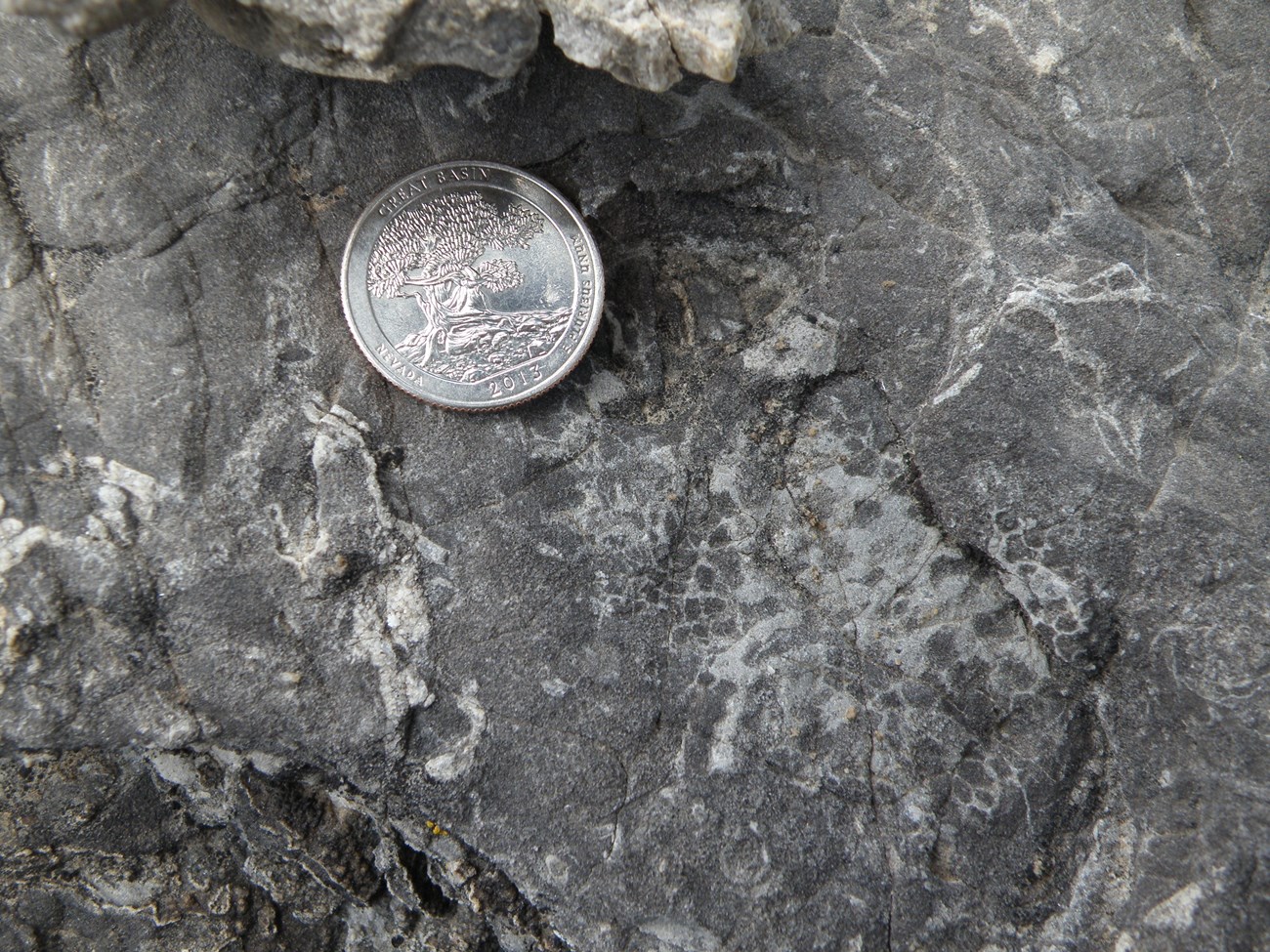Part of a series of articles titled Geologic Time Periods in the Paleozoic Era.
Article
Silurian Period—443.8 to 419.2 MYA

NPS image
Introduction
The Silurian was named for a Welsh tribe, the Silures, which lived in the area where Roderick Impey Murchison first described rocks of this age. Murchison studied the complex geology of western Wales in the 1830s and carefully documented the abundant fossils present in the Silurian strata.
Significant Silurian events
During the Silurian Period Earth underwent considerable changes, which had important repercussions for the environment and life. In particular, Earth’s atmosphere developed an effective ozone layer concentration. Generally speaking, the climate stabilized, ending the previous pattern of climatic fluctuations that periodically caused continental glaciations; glacial melting contributed to a substantial rise in global sea level.
Possibly the most remarkable biological event during the Silurian was the evolution and diversification of fish. Not only does this time period mark the wide and rapid spread of jawless fish, but also the appearances of both the first known freshwater fish and the first fish with jaws.
Learn more about events in the Silurian Period
During the Silurian Period, the atmosphere came to contain the optimum concentration of oxygen for creating ozone. The maximum ozone production in the upper atmosphere occurs when the oxygen content is approximately 10% of today’s level. At this concentration of atmospheric oxygen, the ozone layer provides the most effective protection against lethal ultraviolet radiation. This is approximately where it stood during the Silurian Period.
In 1985 scientists taking regular measurements of ozone concentrations over Antarctica announced that the amount of ozone in the springtime atmosphere had fallen by 40% in the period 1977–1984. Other sources, including satellite data, confirmed these findings. In the Antarctic spring, a hole the size of the United States and about 6 miles (10 km) thick appears in the ozone layer.
Ozone is broken apart mainly by reaction with chlorine monoxide (Cl_O. One molecule of chlorine monoxide can destroy many thousands of molecules of ozone. Research on the breakdown of the ozone layer in the late 1980s and early 1990s, which concentrated on the role of human-manufactured pollutants, discovered that chlorofluorocarbons used in refrigerators, aerosol cans, and the manufacture of insulating plastic foam are responsible for the decline in concentrations of ozone. Chlorofluorocarbons were originally considered the ideal industrial chemical because they are extremely stable and nontoxic and do not break down in the troposphere. Because they are lightweight gases, however, they eventually rise into the stratosphere when they encounter intense ultraviolet energy and breakdown, releasing chlorine.
Source: Bradshaw and Weaver (1991).
Visit—Silurian Parks
Every park contains some slice of geologic time. Below, we highlight selected parks associated with the Silurian Period. This is not to say that a particular park has only rocks from the specified period. Rather, rocks in selected parks exemplify a certain event or preserve fossils or rocks from a certain geologic age.
-
Chesapeake and Ohio Canal National Historical Park (CHOH), West Virginia, Washington D.C., and Maryland—[CHOH Geodiversity Atlas] [CHOH Park Home] [CHOH npshistory.com]
-
Chickasaw National Recreation Area (CHIC), Oklahoma—[CHIC Geodiversity Atlas] [CHIC Park Home] [CHIC npshistory.com]
-
Cumberland Gap National Historical Park (CUGA), Virginia, Kentucky, and Tennessee—[CUGA Geodiversity Atlas] [CUGA Park Home] [CUGA npshistory.com]
-
Death Valley National Park (DEVA), California, Nevada—[DEVA Geodiversity Atlas] [DEVA Park Home] [DEVA npshistory.com]
-
Delaware Water Gap National Recreation Area (DEWA), New Jersey & Pennsylvania—[DEWA Geodiversity Atlas] [DEWA Park Home] [DEWA npshistory.com]
-
Katahdin Woods and Waters National Monument (KAWW), Maine—[KAWW Geodiversity Atlas] [KAWW Park Home] [KAWW npshistory.com]
More about the Paleozoic
►
Last updated: April 28, 2023

